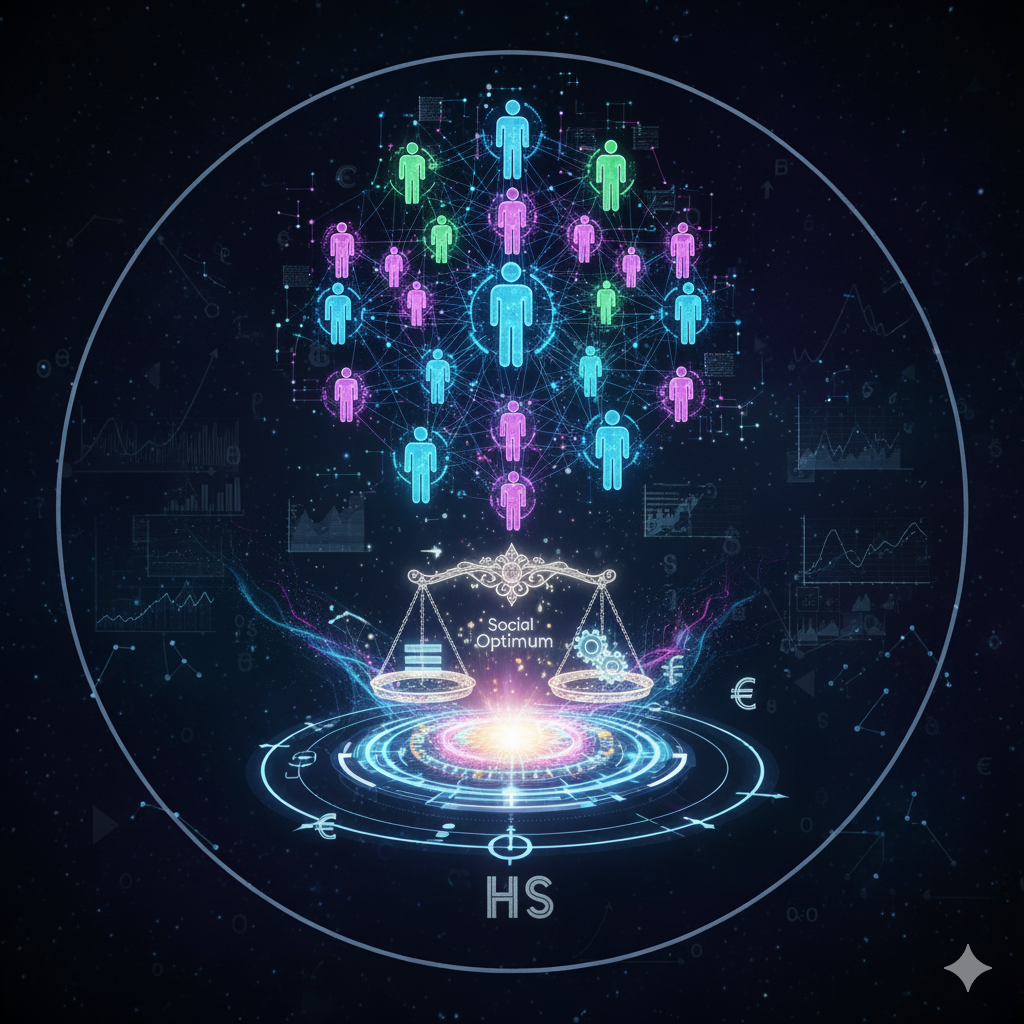Introduction
The Balance of Payments (BOP) is one of the most critical indicators of a country’s economic health and external sector stability. It records all economic transactions between residents of a country and the rest of the world during a specific period, usually a year. The BOP is a comprehensive statement that includes trade in goods and services, cross-border investments, financial flows, and transfers. For a developing country like India, the BOP assumes great significance, as it influences economic policy, currency stability, foreign exchange reserves, and global competitiveness.
This article explains the concept of Balance of Payments, its structure, and the underlying reasons for India’s persistent BOP deficits.
Meaning of Balance of Payments (BOP)
The Balance of Payments is a systematic record of all monetary transactions of a country with other countries. It includes both visible transactions (trade in goods) and invisible transactions (services, remittances, and transfers).
Key Features of BOP:
- Comprehensive Record: It captures imports, exports, investments, loans, remittances, and financial transactions.
- Double-entry System: Every transaction has a debit and credit entry; hence, the BOP always balances mathematically.
- Indicator of Economic Strength: A surplus reflects economic strength, while a deficit highlights external vulnerabilities.
- Policy Tool: Governments and central banks use BOP data to frame monetary, trade, and fiscal policies.
Structure of the Balance of Payments
The BOP is broadly divided into the following components:
1. Current Account
The Current Account deals with the flow of goods, services, income, and unilateral transfers. It reflects a country’s day-to-day transactions with the rest of the world.
- Trade Balance (Merchandise Account):
- Exports of goods (credit)
- Imports of goods (debit)
- Net trade balance = Exports – Imports
India often faces a trade deficit due to high import dependence on crude oil, gold, and electronics.
- Services (Invisibles):
Includes IT services, software exports, tourism, financial services, transport, and professional consultancy. India has a surplus in services, especially IT and business outsourcing. - Income Account:
Covers payments on investments such as interest, dividends, and profits earned abroad or paid to foreign investors. India generally experiences a deficit here, as foreign investors repatriate profits. - Unilateral Transfers:
These are one-way transfers without any quid pro quo, such as remittances from Indians working abroad, grants, and donations. India receives large remittances from the Gulf and North America, contributing positively.
2. Capital Account
The Capital Account shows the inflow and outflow of capital in the form of investments and loans.
- Foreign Direct Investment (FDI): Long-term investment in productive assets like factories, real estate, and joint ventures. India attracts significant FDI in sectors like telecom, IT, and manufacturing.
- Foreign Portfolio Investment (FPI): Short-term capital flows in stock markets, bonds, and mutual funds. These are volatile and highly sensitive to global financial conditions.
- External Borrowings: Loans from international organizations, bilateral credit, and commercial borrowings.
- Banking Capital: Movements of funds between Indian banks and their foreign branches.
- NRI Deposits: Non-resident Indians deposit money in Indian banks, which adds to foreign exchange inflows.
3. Official Reserve Transactions
The Reserve Bank of India (RBI) maintains foreign currency reserves to stabilize the rupee and meet international obligations. Transactions involving changes in these reserves are recorded here.
4. Errors and Omissions
To balance statistical discrepancies arising from mismatches in data, errors and omissions are added as an adjustment entry.
Importance of Balance of Payments for India
- Stability of the Rupee: A surplus in the BOP strengthens the rupee, while a deficit puts downward pressure.
- Policy Formulation: Helps the government decide on tariffs, subsidies, and trade policies.
- Foreign Exchange Management: Ensures adequate reserves for imports and debt servicing.
- Global Competitiveness: Indicates how well Indian industries perform in international markets.
- Investor Confidence: A strong BOP encourages foreign investors to invest in India.
Deficit in India’s Balance of Payments
Despite high service exports and remittances, India has often faced BOP deficits, particularly in the current account. This deficit implies that the country’s foreign exchange outflows exceed inflows, requiring external borrowing or use of reserves.
Historical Perspective of BOP Deficit in India
- 1950s–1970s: India ran persistent trade deficits due to import dependence and low export capacity. Aid and concessional loans filled the gap.
- 1991 Crisis: Severe BOP crisis with reserves falling to cover only two weeks of imports, leading to economic reforms and liberalization.
- 2000s: Strong IT sector growth and remittances improved BOP, but high oil prices created stress.
- Post-2010: Rising gold and crude oil imports widened the current account deficit, though capital inflows helped finance it.
- Recent Years: Global volatility, currency depreciation, and slowing exports have again raised BOP concerns.
Reasons for India’s BOP Deficit
1. High Import Dependence
- Crude Oil: India imports over 80% of its crude oil, making the trade balance highly sensitive to global oil prices.
- Gold Imports: Cultural demand and investment needs drive high gold imports.
- Electronics & Machinery: Heavy reliance on imports of electronic goods, semiconductors, and capital machinery.
2. Slow Export Growth
- Indian exports face challenges due to low diversification, inadequate infrastructure, and competition from countries like China, Vietnam, and Bangladesh.
- Lack of competitiveness in manufacturing reduces India’s ability to penetrate global markets.
3. Global Economic Conditions
- Recessions in advanced economies reduce demand for Indian exports.
- Global financial market volatility affects capital flows, leading to sudden outflows.
4. Deficit in Income Account
- Profits, interest, and dividends earned by foreign companies in India are repatriated, causing a net outflow.
5. Rupee Depreciation
- A weakening rupee makes imports costlier, widening the trade deficit, though it provides some export competitiveness.
6. Service Sector Limitations
- Although India has a surplus in services, dependence on a few sectors (IT and ITES) makes it vulnerable to global demand fluctuations.
7. Capital Flight and Portfolio Outflows
- Sudden withdrawal of portfolio investments due to global uncertainties leads to capital account pressures.
- Geopolitical instability further worsens investor sentiment.
8. High External Debt
- India’s external debt servicing obligations require significant foreign exchange, adding pressure on reserves.
9. Domestic Structural Issues
- Infrastructure bottlenecks, low productivity, and complex regulatory frameworks reduce export competitiveness.
Measures to Correct BOP Deficit in India
1. Export Promotion
- Diversification into new markets and products.
- Incentives for exporters in high-value sectors like pharmaceuticals, electronics, and green technology.
2. Import Substitution
- Encouraging domestic production of crude substitutes, electronics, and defense equipment under Atmanirbhar Bharat.
3. Energy Reforms
- Investing in renewable energy to reduce oil import dependency.
4. Attracting Stable Capital Inflows
- Encouraging long-term FDI over short-term FPI.
- Liberalizing sectors to attract sustainable investments.
5. Boosting Remittances
- Facilitating easier financial transfers by NRIs through improved banking channels.
6. RBI and Government Policies
- Maintaining adequate reserves.
- Effective exchange rate management.
- Bilateral trade agreements to improve market access.
Conclusion
The Balance of Payments serves as a mirror to India’s interaction with the global economy. While the country has made significant progress in strengthening its BOP through reforms, services, and remittances, persistent trade deficits and external vulnerabilities continue to pose challenges. The reasons for India’s BOP deficit are deeply rooted in structural issues such as import dependence, inadequate export competitiveness, and global financial volatility.
Corrective measures such as boosting domestic production, diversifying exports, encouraging renewable energy, and attracting stable FDI can help India achieve a more sustainable BOP position. In an increasingly interconnected world, managing the BOP effectively is essential for India’s long-term economic growth and financial stability.




